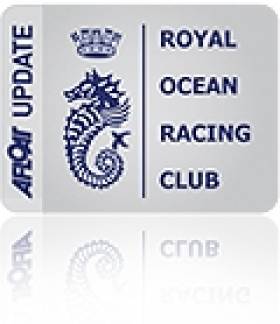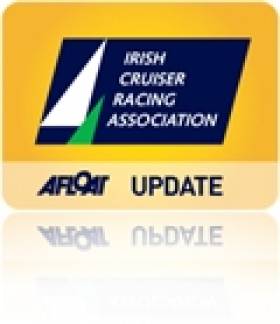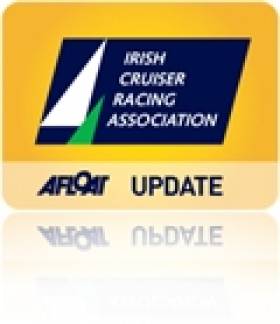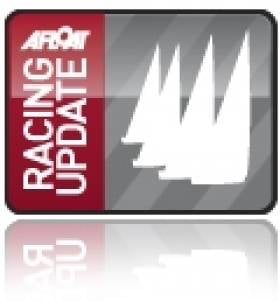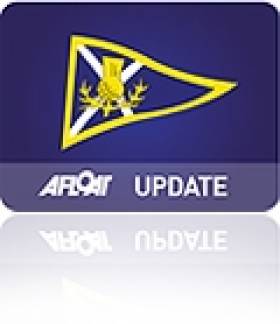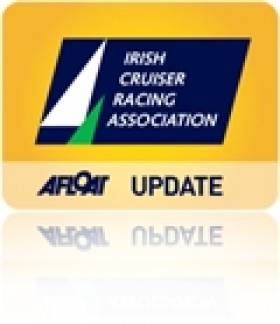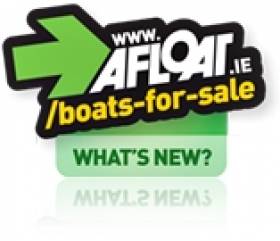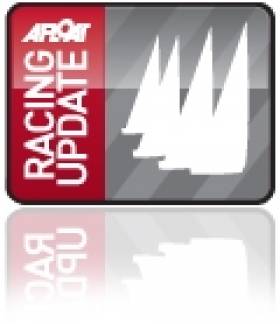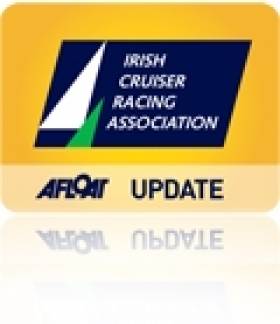Displaying items by tag: IRC
#dbsc – BENETEAU 31.7 Echo- 1. Prospect (Chris Johnston), 2. Levante (M.Leahy/J.Power), 3. Extreme Reality (P.McSwiney/E.O'Rafferty)
BENETEAU 31.7 - 1. Prospect (Chris Johnston), 2. Levana (Jean Mitton), 3. Crazy Horse (F Heath & I Schuster)
CRUISERS 0 Echo - 1. Tsunami (Vincent Farrell), 2. Aurelia (Chris Power Smith), 3. Wow (George Sisk)
CRUISERS 0 - 1. Tsunami (Vincent Farrell), 2. Wow (George Sisk), 3. Aurelia (Chris Power Smith)
CRUISERS 1 - 1. Ruth (L Shanahan), 2. Jalapeno (P Barrington et al), 3. Something Else (J.Hall et al)
CRUISERS 1 Echo - 1. Ruth (L Shanahan), 2. Jalapeno (P Barrington et al), 3. Something Else (J.Hall et al)
CRUISERS 2 Echo - 1. Jester (Declan Curtin), 2. Antix (D Ryan), 3. Peridot (Jim McCann et al)
CRUISERS 2 - 1. Jester (Declan Curtin), 2. Peridot (Jim McCann et al), 3. Jambiya (Ryan & Lattimore)
CRUISERS 3 A Echo - 1. Hard on Port (F O'Driscoll), 2. Quest (B Cunningham), 3. Cries of Passion (B Maguire)
CRUISERS 3 A - 1. Quest (B Cunningham), 2. Hard on Port (F O'Driscoll), 3. Cries of Passion (B Maguire)
CRUISERS 3 B - 1. Asterix (Counihan/Meredith/Bushell), 2. Cacciatore (M Ni Cheallachain), 3. Taiscealai (B Richardson)
CRUISERS 3 B Echo - 1. Jiminy Cricket (M Tyndall), 2. Small Wonder (H Kelly), 3. Saki (Paget McCormack et al)
Combined Classes Echo - 1. White Mischief (Timothy Goodbody), 2. Rupert (R & P Lovegrove), 3. Jester (Declan Curtin)
Combined Classes - 1. White Mischief (Timothy Goodbody), 2. Rupert (R & P Lovegrove), 3. Jester (Declan Curtin)
DRAGON - 1. Diva (R.Johnson/R.Goodbody), 2. Phantom (D.Williams), 3. Zinzan (Daniel O'Connor et al)
FLYING FIFTEEN - 1. Ignis Caput (David Mulvey), 2. Betty (D & S Gorman), 3. Fflogger (Alan Dooley)
GLEN - 1. Glenmiller (P Cusack), 2. Glenmarissa (F.Elmes), 3. Glendun (B.Denham et al)
RUFFIAN 23 - 1. Shannagh (S.Gill/P.MacDiarmada), 2. Diane ll (A Claffey/C Helme), 3. Bandit (Kirwan/Cullen/Brown)
SB20 - 1. Venuesworld.com (Ger Dempsey), 2. Sin Bin (Michael O'Connor)
SHIPMAN - 1. Jo Slim (J.Clarke et al), 2. Euphanzel lll (M Muldoon), 3. Gusto (Heath, Miles, Crisp, Duggan)
SIGMA 33 - 1. White Mischief (Timothy Goodbody), 2. Rupert (R & P Lovegrove), 3. Leeuwin (H&C Leonard & B Kerr)
SIGMA 33 - 1. White Mischief (Timothy Goodbody), 2. Rupert (R & P Lovegrove), 3. Popje (Ted McCourt)
SQUIB - 1. Perfection (Jill Fleming), 2. Sidewinder (R&R Westrup), 3. Femme Fatale (V Delaney)
WHITE SAIL CRUISERS Echo - 1. More Mischief (Eamonn Doyle), 2. White Lotus (Paul Tully), 3. Just Jasmin (Philip Smith)
WHITE SAIL CRUISERS - 1. Persistence (C. Broadhead et al), 2. White Lotus (Paul Tully), 3. Act Two (Michael O'Leary et al)
RORC Publish 2015 GB IRC Events Calendar
#rorc – RORC has published a list of GBR IRC Championships for the coming season.
There are plenty of opportunities for boats and their owners to become Spinlock IRC champions around the country this summer, says Jenny Howells, Technical Manager of the RORC Rating Office in Lymington.
"Now in its 6th year, the GBR IRC Championship circuit has a variety of events to offer IRC racers, from the Small Boat Championship in the Solent to Regional Championships in six different areas, and of course the National Championship organised by RORC itself."
More details of the events and organising clubs can be found on www.rorcrating.com in the Spinlock IRC section. The Championships are approved to accept Spinlock IRC Single Event Ratings, so even if you are not a regular IRC racer you can compete in two events per year at a minimal rating fee.
The calendar for 2015 is:
May-Sept Solent Various Solent venues
06-07 June Scottish Helensburgh
11-12 July Small Boat Hamble
11-12 July East Coast Felixstowe
17-19 July National Cowes
20-22 Aug South West Fowey
21-23 Aug Welsh Pwllheli
18-19 Sept Double Handed Cowes
18-20 Sept Channel Islands Guernsey
Man Overboard Costs Cri Cri Shot at Welsh IRC Title
#welshIRC – Did you know there was a catchy named 'RORC North Western IRC Regional Championships' submerged beneath 'Abersoch Keelboat Week'? As one Irish interloper explained it's been some years since a week swinging on a mooring was de rigueur and Keelboat Week attracted much beyond local interest. Down the road at Pwllheli they have a well serviced marina, a national events centre with grand plans for expansion and a Celtic Regatta that has also recently become of little more than local interest.
Put the cruiser/racer event and the cruiser/racer friendly venue together and north Wales finally has the beginnings of a big boat event worth travelling for. For 2014 the rebadged Spinlock Welsh IRC Championships, with the support of ISORA and ICRA, drew interest from the north west of England, Scotland and Dublin and a competitive 40 boat fleet.
If competing interests can be navigated and a stable date found in the Celtic sailing calendar, add a patch of water whose simple (although not quite as minimal as the locals would like you to believe) tide and wind patterns offer a different challenge to anything found in the major sailing centres of Ireland or west of Scotland and the south coast of the Llyn peninsular may have the ingredients for a top class championships.
Confounding the measly forecast 2 races where sailed in 18 – 22 knots on the Friday. Royal Irish quarter tonner Cri Cri, skippered by Paul Colton, made a commanding start with a first in both races in Class 1, while the Sigma 33 Legless Again took 2nd and 3rd to take 2nd spot at the end of day 1. In Class 0, it was evident that Corby 36 Stratisfear, Corby 33 Imposter and Roxstar were serious contenders for the top spot with the Stratisfear taking a 2nd and 1st, Imposter taking 1st and 3rd and Roxstar 3rd and 2nd.
Overnight the fleet made welcome use of the brand new visitor and events pontoons at Pwllheli. These pontoons are part of the £8.3m investment from the European Regional Development Fund through the Welsh Government and Gwynedd Council in the new Welsh National Sailing Academy and Events Centre that will open its doors in 2015. 2 cranes are to be added by the time next years event gets under way making attending the event even easier.
After a further 4 races on Saturday Stratisfear's consistent performance put them firmly in the lead adding a 3rd and another first to two wins from the morning. Roxstar followed close on their heels.
In class 1 Molissa and She Too all ended the day in contention. Eazi Tiger's consistent performance had them in 3rd place overall, a broken life line in race 3 slipped CriCri, into 2nd place and, after some highly consistent sailing, the J97 Injenious moored for the day in first place overall.
With winds over 30 knots on Sunday racing for class 1 was abandoned. In class 0 local J109s Mojito and Sgrech got the best starts on the 24nm course and were off across the bay towards the St. Tudwal islands before some others had started as some were struggling to get sails up in the conditions.
Round the islands and through some challenging seas, Imposter took the lead and line honours with Mojito 2nd and Gringo (National Yacht Club skippered by Tony Fox) third on the water.
Irish Sailors Make Their Mark At Welsh IRC Championships
#icra – Support provided by Irish racers from ISORA and ICRA contributed to the success of last week's inaugural Welsh IRC championships. Forecasts for Pwllheli on the weekend of the inaugural Spinlock IRC Championships were predicting very light winds and many of the competitors wondered whether the full complement of races would be achieved. When the competitors emerged from the skippers' briefing they were greeted by winds of around 18 - 22 knots indicating that some good racing was on the cards for the Friday afternoon.
The Royal Dee Yacht Club Race Committee, lead by Mike Butterfield, ran two races on the first day with Cri Cri, Royal Irish Yacht Club skippered by Paul Colton, making a commanding start with a first in both races in Class 1, while Legless Again took 2nd and 3rd to take 2nd spot at the end of day 1. In Class 0, it was evident that Stratisfear, Imposter and Roxstar were serious contenders for the top spot with Stratisfear taking a 2nd and 1st, Imposter taking 1st and 3rd and Roxstar 3rd and 2nd.
Overnight the fleets were moored for the first time on the new visitor and events pontoons at Pwllheli. These pontoons are part of the £8.3m investment from the European Regional Development Fund through the Welsh Government and Gwynedd Council in the new Welsh National Sailing Academy and Events Centre that will open its doors in 2015. Friday night provided some legendary hospitality from Pwllheli with the Crews' dinner and a few beers.
Saturday started very wet and the wind again defied the forecasters by providing speeds in the high teens. The rain cleared in time for racing and, as it looked like it was going to be another good day on the water, the race committee capitalised by running four races. At the end of day two Stratisfear's consistent performance put them firmly in the lead adding a 3rd and another first to their morning results with Roxstar close on their heels.
In class 1, it was still all to play for with Molissa, Injenious, CriCri, and She Too in contention. However, Eazi Tiger's consistent performance had them in 3rd place overall with CriCri, who couldn't maintain Friday's excellent performance, slipping into 2nd place overall. After some consistent racing Injenious moored for the day in first place overall.
Sunday presented the fleets with higher winds for their coastal race with speeds of 27 knots being experienced in the shelter of the marina. Once out on the water, winds in excess of 30 knots were recorded and with wind over tide, boats were met by choppy seas in the bay. Many boats decided that the conditions were too much for them and didn't turn up to the start, including Roxstar and Stratisfear who realised that they had enough results to discard the last race and still win overall.
The race committee, having to endure those conditions themselves, decided that the smaller fleet, those boats with IRC handicaps less than 1.000, would not race and class 1 racing was abandoned. Local J109s Mojito and Sgrech got the best starts on the 24nm course and were off across the bay towards the St. Tudwal islands before some others had started as some were struggling to get sails up in the conditions.
Round the islands and through some challenging seas, Imposter took the lead and line honours with Mojito 2nd and Gringo (National Yacht Club skippered by Tony Fox) 3rd, but after handicaps were applied Mojito took first place, Imposter 2nd and Gringo took 3rd.
Guy Cowper, the skipper of winning boat Stratisfear, was delighted with the excellent sailing that was had by all at the Spinlock IRC Welsh Championships. He said: "This is the best bay I've ever sailed in; there's no tide, no commercial traffic and the scenery is second to none. Add to that the positive attitude of the Club's staff and volunteers and it would be difficult to have anything but a great event here. When the new Welsh National Sailing Academy building is opened next year this will be a World Class venue. I cannot wait to return to sail in Pwllheli."
The overall champion for both the Irish Crusing Racing Association (ICRA) and the Welsh Championship will be announced shortly.
The events team at Plas Heli and Pwllheli Sailing Club are currently consulting competitors regarding the format and timing of the 2015 championships which will be hosted in the new Academy facilities.
PSC Commodore Stephen Tudor said: "The Club was very proud to be offered the opportunity to host the first Welsh Spinlock IRC Championships and we are delighted that so many competitors from Ireland, Isle of Man, Scotland and Liverpool enjoyed their time in Pwllheli both on the water and ashore. The association ISORA and ICRA has strengthened the already established cross-channel link and hopefully this will continue to flourish and grow."
Overall standings for the weekend were as follows:
Class 1:
1st Injenious SCYC Hallworth Crompton
2nd CriCri Royal Irish Yatch Club Paul Colton
3rd Eazi Tiger Liverpool YC Connolly Kyffin Oliver
Class 0:
1st Stratisfear RDYC Guy Cowper
2nd Impostor SCYC Richard Fildes
3rd Roxstar Clyde Cruising Club Findlay and Anderson
Full results can be found here
#CelticRegatta - The inaugural Spinlock IRC Welsh Championships hosted by Pwllheli Sailing Club (PSC) is less than a fortnight away, with the Irish expected to make a strong showing in a competitive fleet over the weekend of 1-3 August.
And with a few free berths available in the harbour's new pontoons, there's still a chance to get involved in what's shaping up to be a strong weekend of racing.
Last year's successful J Cup at PSC was a springboard to launch the first 'Celtic Regatta', with the added award of the Spinlock IRC regional title.
The event will also showcase the recently completed visitor and event pontoons which form part of the £8.3m investment in the Welsh National Sailing Academy and Event Centre.
The Welsh Championships will be the first major event to make use of the new facilities, a year in advance of the Fireball Worlds scheduled for 17-28 August 2015.
Among the Celtic Regatta's supporters is the Irish Cruising Racing Association (ICRA), which has just completed its own successful championships hosted by the Royal Irish Yacht Club in Dun Laoghaire.
ICRA chairman and event organiser Norbert Reilly commented that the two events strengthen the ties already established across the Irish Sea. Indeed, a trophy will be awarded to the competitor with the best combined results in the two events.
And that's not to mention the Dun Laoghaire to Pwllheli ISORA Race on 26 July, a feeder race to the Welsh Championships that counts as the seventh race in the ISORA 2014 series sponsored by Kona.
"The ISORA fleet regularly visits Pwllheli either for a race start or finish and the Welsh welcome is always warm and friendly," said ISORA chairman Peter Ryan. "The new facilities in Pwllheli will make the sailing waters easily accessible and a great destination for visiting offshore fleets, flotillas and for keel boat regattas and championships."
Among the other competitors readying for the regatta is Richard Fildes, a seasoned campaigner in Cork Week and Dun Laoghaire, notably successful in his recently sold Corby 37 Impetuous.
His home waters are in Cardigan Bay, and he says he's looking forward to competing in the Welsh IRCs in his recently acquired Corby 33 Impostor - as well as return the favour of the many great Irish welcomes he's received over the years.
Fildes and the rest will race a programme designed by international race officer Mike Butterfield, who heads the IRC Welsh Championships race management team and promised to provide the best possible competition on the water.
"The bay offers ideal race management opportunities with no commercial shipping to worry about and the tidal influence is not significant," said Butterfield.
Meanwhile, PSC Commodore Stephen Tudor - a former Irish Sea ISORA Champion himself - expressed his pride in his clubs hosting of the first Welsh IRC Championships and said he is "delighted to see competitors already entered from Ireland, Isle of Man, Scotland and Liverpool in addition to the local competitive fleet.
"Entries are still being received and we still have free berths available for the event on the new academy pontoons."
#scottishseries – Day one of the Silvers Marine Scottish Series got off to a slightly later start than billed due to light winds. IRC Class 1 left Gourock at 10.30am and, from the start, Steve Cowie's Zephyr and Jonathan Anderson and Murray Caldwell's Roxstar made the running.
Conditions seemed to favour the boats which chose to start from the Gourock shore and the other boats which had elected to start from offshore found they had to come back in, which cost them considerable time.
But it wasn't all plain sailing at the front as Roxstar led Zephyr round the wrong marker, on the wrong course which meant both boats had to go back and get on the right course. Today was a real hard, tactical day for the IRC Class 1 boats and this, combined with the navigational issues meant that Friday's racing was much closer than anticipated.
However, the day concluded with a win to Zephyr with Jamie McGarry and Colin Moore, of Silvers Marine, in Eala of Rhu claiming a well-deserved second and Jim Dick in Fortuna clinching third.
In IRC Class 2 Kevin Aitken in Animal goes into tomorrow ahead after winning their class by 7 minutes, making yachts such as Neill Sandford's Now or Never 3 and John Corson's Salamander XXI playing catch up.
As well as the Clyde Passenger Challenge Race the MalinWaters fleet which includes the one design Sigma 33's, Sonta's and sport boats had four very successful races on upper Loch Fyne. In the Sigma's it's very tight at the front with Donald McLaren in Sigmatic followed by Harold Hood in Odyssey II and Roy Summers in Rajah.
In the Sonata's Murray Caldwell in Red Hot Poker goes into tomorrow with a comfortable ten point lead over Mark Taylor in Saraband and Mark Bradshaw in Mostly Harmless.
Today has seen some very tight racing but there's one certainty – it's great to see Scottish Series underway on Loch Fyne!
ICRA Drop Plans for New Cruiser Division
#cruiserracing – The Irish Cruiser Racing Association (ICRA) has dropped plans to create a new handicap division at the bottom end of class 1 and the top of class 2 for its IRC national championships at the Royal Irish Yacht Club (RIYC) next month, one of the biggest events of the Irish sailing calendar.
The ICRA event, that is aiming for a record entry of over 110 boats, is a handicap based regatta which means any decision affecting rating bands and in what class boats sail can be a contentious issue.
ICRA's handicapping chief Denis Kiely explained yesterday 'there wasn't enough interest/entries and while this is somewhat disappointing we have to work with what we have not what we would like to have'.
The turnaround means the championships will have a more traditional configuration of Divisions 0, 1, 2, 3, and 4 in spite of the class band shake–up that was hinted at November's annual conference.
The non-spinnaker boats [Corinthian Cup] will most likely be in 2 divisions and they will be numbered 5 and 6.
In an up date to skippers yesterday Kiely said arrangements are still provisional until remaining entries are in but it is very unlikely that the divisions configuration will change hereafter - individual boats at the margins may be a different matter.
A Corby 25 for €25,000? Thunderbirds are Go!
#corby25 – A Corby 25 IRC cruiser–racer built by Harley Yachts, is on market, just in time for competition at the ICRA Nationals in Dun Laoghaire in June and Cork Week in July.
Thunderbird has been well maintained and stored inside every winter. The 2004 build is advertised on Afloat Boats for Sale site through Northern Ireland broker Whyboats Northern Ireland.
One of the most successful designs drawn by John Corby, these 25–footers have been extremely successful in Ireland, the UK and wins include the Irish IRC nationals Class 2 from 2007 to 2001 and Cork Week - IRC 5 in 2010 and 2008. The Corby 25 was awarded Yacht of the Year in 2009.
On sale at €25,000, Thunderbirds are go! Full advert here.
New Welsh IRC Championships at Pwllheli to be Promoted in Ireland
#IRC – A brand new Welsh IRC championships dubbed the 'Celtic Regatta' is to be staged at the Welsh National Sailing Academy in Pwllheli. It will be promoted in Dun Laoghaire this weekend by Stephen Tudor, an Irish Sea ISORA Champion and the Commodore of Pwllhelli Sailing Club.
The event flyer (downloadable below as a jpeg file) carries the logos of the National Yacht Club and ISORA.
Tudor says there has been a very strong and positive response to proposals for the 2014 IRC Welsh National Championships following the previous announcement regarding the date for the event - 1st to 3rd August 2014. (4th is a bank holiday in Ireland).
Tudor comes to Dun Laoghaire this weekend for the ISORA agm and black tie prizegiving at the National Yacht Club tomorrow and aims to recruit as much interest from this side of the Irish Sea as possible.
The event aims to build on the long established links between Ireland and Wales and in particular between the Clubs on each side if the Irish Sea.
So far Tudor has produced an initial promotional flyer for the three day event and a copy is attached below as a jpg document for download.
The IRC National Championship is an open event and will use the facilities of the Welsh National Sailing Academy and Event Centre and will draw on the skill and experience of the Academy's event team who regularly run World and European Championships.
Work on the £8.3M Academy facilities starts in the new year.
This work says Tudor will enhance and extend the events capacity in Pwllheli and will improve access to the world renowned sailing waters of Cardigan Bay with the provision of new dedicated visitor and events berths with cranes located adjacent to the Marina.
The substantial dredging work is expected to be completed before the start of the sailing season. The iconic and new state of the art Academy building will be ready for the 2015 season and will incorporate a café/restaurant and club house all of which will have views of the beach and the mountains of Snowdonia and mid Wales will provide a spectacular backdrop.
Welsh IRC National Championships for Pwllheli Sailing Club in August
#welshircnationals – At their annual meeting on 12th September, the GBR IRC Committee approved the IRC GBR Regional Championships for 2014 to be held in Pwllheli.
The date proposed for the Championships is to coincide with the Pwllheli Regatta between 1st and 4th August 2014. An 'Event Organising Committee (EOC)' is now been setup and anyone wishing to contribute should contact Stephen Tudor at Pwllheli SC



























